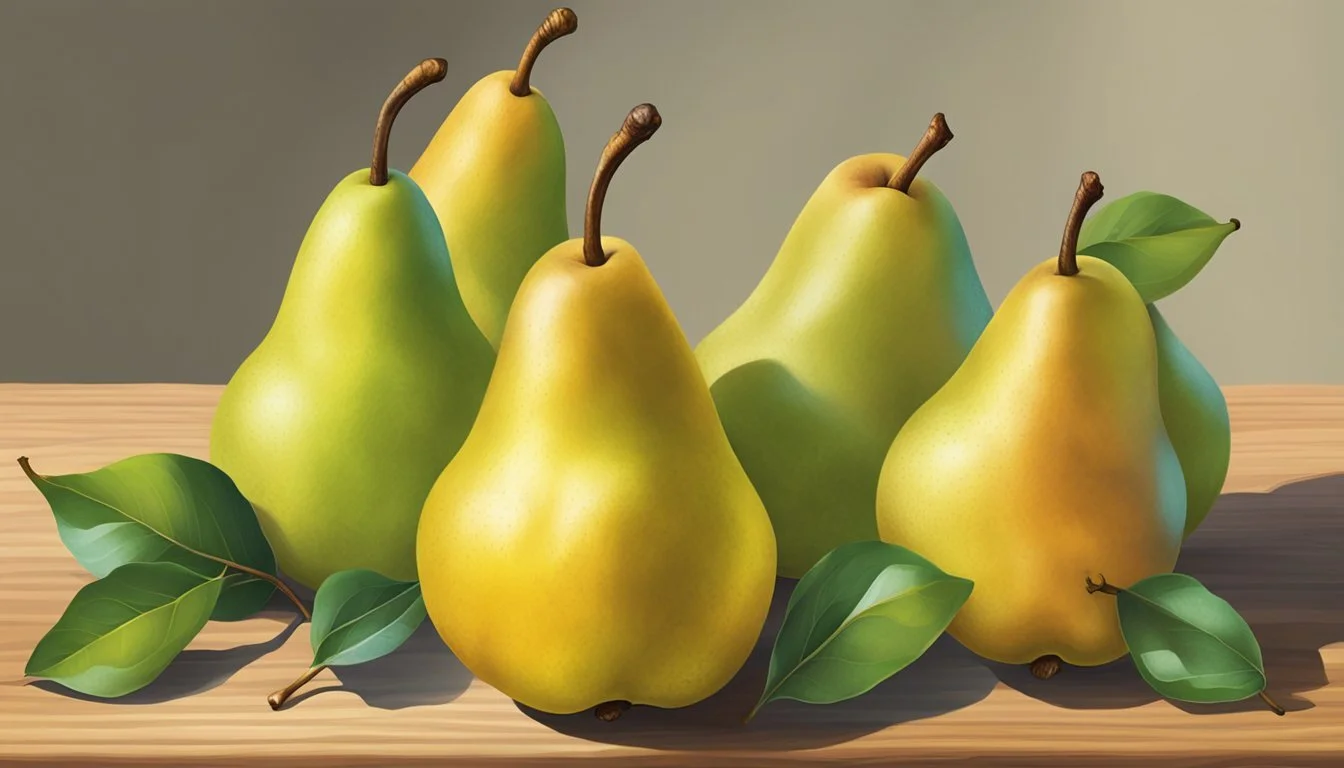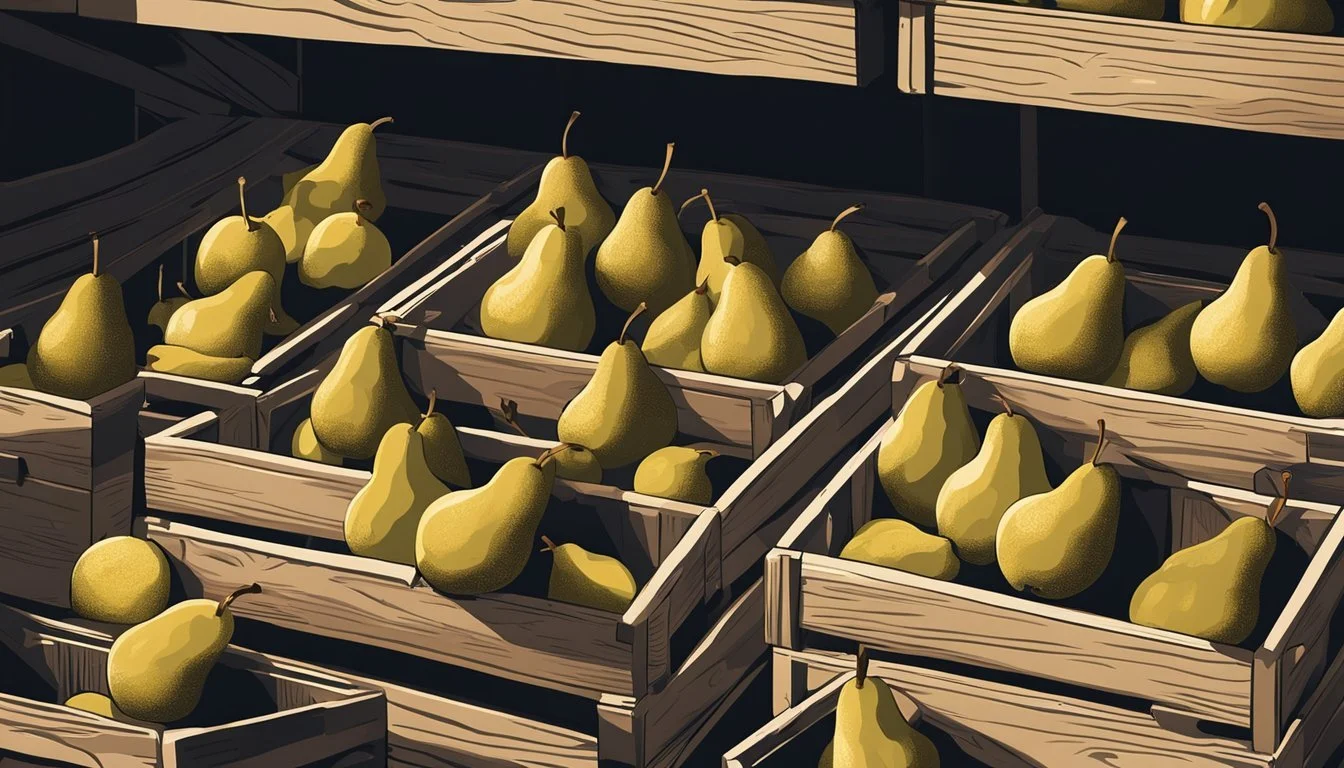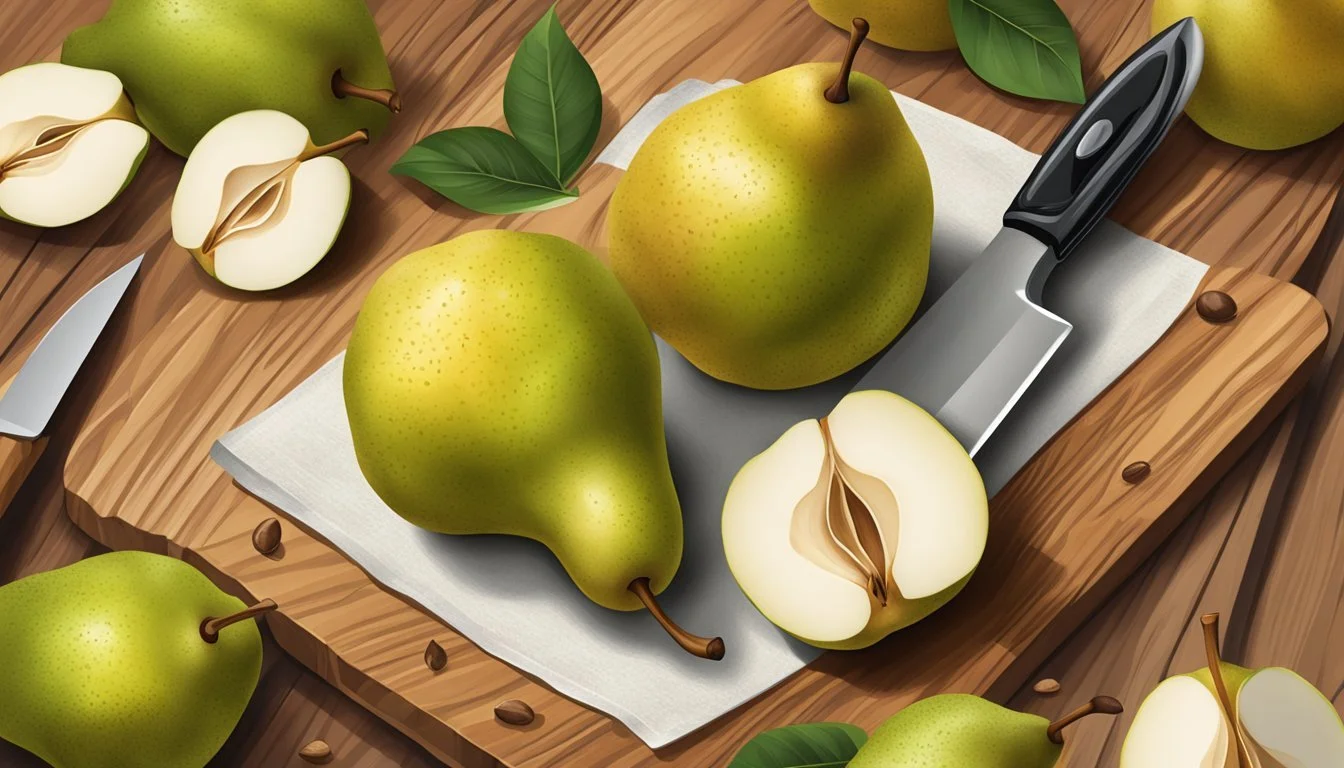How to Tell if Comice Pairs Are Ripe
Expert Tips for Perfect Fruit Selection
Comice pears, known for their rich, sweet flavor and creamy texture, are a premium variety originally from France. Determining the ripeness of Comice pears is essential for enjoying them at their best, as ripeness greatly affects their palatability. Unlike some fruits that may be judged by color alone, pears, including the Comice variety, ripen from the inside out, making it a subtle art to ascertain their readiness for consumption.
Ripeness in Comice pears is best assessed by a gentle pressure test near the top of the pear, around the stem, known as the neck. If there's a slight give when pressed, the pear is ripe. This method of checking ripeness ensures that the delicate fruits are not bruised in the process, allowing them to maintain their integrity for eating or pairing with other foods. Proper storage is also crucial in preserving the quality of Comice pears; they should be kept in a cool, dark environment at temperatures just above freezing.
Key Takeaways
Comice pears' ripeness cannot be judged solely by appearance; testing by feel is necessary.
Ideal storage for Comice pears involves cool temperatures and careful handling to prevent bruising.
Knowing when a Comice pear is ripe enhances its creamy texture and sweet flavor for culinary use.
Identifying Comice Pears
Comice pears, known for their rich flavor and creamy texture, can be identified by specific varietal characteristics, skin color and texture, and their distinctive shape. Recognizing these features ensures proper selection and enjoyment of this particular variety.
Varietal Characteristics
Comice pears, once called "Doyenne du Comice," are prized for their sweet, mellow flavor and are often recognized by their decadently creamy flesh. This variety is typically harvested when green, and some strains display a red blush or are entirely red, showcasing their diversity.
Skin Color and Texture
The skin of a Comice pear is notably fragile and delicate, making them susceptible to bruising. They may show signs of bruising on the surface, which doesn't always indicate internal damage, as their juicy interior often remains intact. They exhibit a lighter green hue when nearing ripeness, and their skin feels smooth due to the developed surface wax.
Distinctive Shape
Comice pears are characterized by a round, squat shape that sets them apart from other pear varieties. Their bulbous bottom and shorter, well-defined neck contribute to their recognizable appearance, making them easily distinguishable. This unique shape also contributes to their tendency to bruise, necessitating gentle handling.
Assessing Ripeness
When determining the ripeness of Comice pears, one must pay attention to certain specific indicators. These include the softness at the neck, the coloration of the fruit, and the aroma emitted. Accurate assessment ensures that the pear's flavor and texture are enjoyed at their peak.
Checking the Neck for Softness
The neck of the pear—the area around the stem—is the most telling part when it comes to ripeness. One should gently press the neck with their thumb; a ripe Comice pear will yield slightly to the pressure, indicating it's ready to eat. Conversely, if the pear is firm at the neck, it needs more time to ripen.
Observing Color Changes
While Comice pears do not exhibit dramatic color changes as some other fruits, subtle shifts can still be informative. As they ripen, these pears may show a slight lightening in their overall green color, becoming more yellowish-green. Keep in mind, the visual cues are less pronounced with Comice pears, and the coloration can also depend on the variety.
Sensing the Aroma
A ripe Comice pear emits a strong, sweet aroma. To assess, one should smell the pear at its stem end. An absence of any smell typically suggests the pear is not yet ripe. This aromatic quality is often one of the most reliable indicators of a Comice pear in its prime for consumption.
Optimal Storage Conditions
Proper storage is crucial for maintaining the freshness of Comice pears and controlling their ripening process. The key to prolonging shelf life lies in maintaining the ideal temperature and humidity levels.
Temperature and Humidity
Comice pears should be stored in conditions where the temperature is consistently between 30-32°F (-1 to 0°C). This temperature range slows down the ripening process and helps keep the fruit fresh for a longer period. The storage area should be cool, dark, and well-ventilated, with sufficient humidity to prevent the pears from drying out. Keeping these factors in balance is vital for preserving the quality of the pears until they're ready to be eaten.
Extending Shelf Life
To extend the shelf life of Comice pears, they should initially be placed in cold storage immediately after harvesting. This halts the ripening process. Once removed from cold storage, the pears typically require four weeks at room temperature to ripen to their best eating quality. However, if one wishes to refrigerate the pears after this period to slow further ripening, they can be kept for an additional few days to several weeks, depending on their condition when placed in the refrigerator. It's important to remember that although refrigeration can extend the pear's shelf life, it will not improve the quality of fruit that has already begun to deteriorate.
Handling and Care
When it comes to Comice pears, their delicate skin requires careful handling to maintain freshness and prevent damage. Each step, from picking to storage, should be performed with meticulous attention to preserve their quality.
Proper Handling Techniques
To ensure the Comice pears' longevity and quality, one must adopt gentle yet effective handling techniques. When picking or simply moving the fruit, it’s imperative that they are held with care to avoid any pressure that may bruise their fragile skin.
Pick up the pears using the whole hand to distribute pressure evenly.
Avoid tight gripping, as the pear's soft flesh is easily damaged.
Use padded materials, like cushioned gloves, when handling to attenuate any potential harm.
Preventing Bruising and Damage
Bruising is a primary concern post-harvest, as Comice pears bruise more readily than other varieties due to their tender skin.
Arrange the pears in a single layer when storing to avoid stacking, which can cause bruises.
Storing pears should be done in a cool, dark, and well-ventilated environment, ideally at temperatures around 30-32°F (-1 to 0°C).
Maintaining humidity levels close to 85 to 90% can help mimic the pears' natural conditions and deter dehydration and bruising.
Culinary Uses
Comice pears are celebrated for their sweet, juicy flavor that makes them highly versatile in the kitchen. They enhance a variety of dishes with their rich and aromatic taste.
Pairing with Cheese
Comice pears and cheese are a classic combination. The pear's sweetness complements the creamy textures and savory notes of many cheeses. For an indulgent treat, one might pair a ripe Comice pear with Brie or Camembert. A simple platter can include thin slices of pear with wedges of cheese, allowing the flavors to meld together beautifully.
Blue Cheese: Its strong flavor contrasts well with the sweetness of Comice pears.
Gouda: Aged Gouda's caramel notes pair pleasantly with the fruit's juiciness.
Desserts and Baking
In desserts, Comice pears hold their shape and texture well, making them ideal for tarts and baked goods. Their inherent sweetness may reduce the need for added sugars. Chefs can incorporate them into:
Tarts: A classic pear tart where slices of Comice pears are arranged atop pastry cream in a buttery crust.
Crumbles or Cobblers: The pears can be mixed with spices and topped with a crumbly oat mixture.
Fresh Eating and Salads
Comice pears are often enjoyed raw, owing to their succulent flesh and mellow sweetness. They add a juicy component to salads, pairing well with mixed greens and vinaigrettes to create a refreshing dish.
Green Salads: Add cubed or sliced Comice pears to salads for a sweet burst of flavor.
Fruit Salads: Combine with other seasonal fruits for a simple, healthful dessert or side.
The Comice pear's versatility and exceptional flavor profile make it a favorite in culinary applications, from sophisticated cheese pairings to delectable desserts and vibrant salads.
Growing Comice Pears
Growing Comice pears can be quite rewarding due to their well-known sweetness and juicy texture. However, it requires attention to specific cultivation needs such as climate, soil conditions, and tree maintenance to ensure a healthy harvest.
Climatic Requirements
Comice pear trees thrive in temperate climates and require a location with full sunlight. They are not suited for extremely hot or cold climates, making it essential to choose a planting site that provides the right balance of moderate temperatures.
Soil and Watering Needs
The ideal soil for Comice pears is well-draining, fertile, and loamy. It's important to maintain consistent moisture levels through regular watering, especially during the crucial growing seasons, but avoid overwatering to prevent root rot.
Tree Maintenance and Pruning
Proper pruning is critical for the health and productivity of Comice pear trees. They should be pruned in late winter to promote good air circulation and sunlight penetration. This helps in maintaining an open center shape, which is beneficial for the growth of the tree and fruit production.
Annual pruning tips:
Remove dead or diseased branches.
Thin excessive growth to avoid overcrowding.
Trim to maintain shape and size.
Pest and Disease Management
To protect Comice pear trees from pests and diseases, gardeners should adopt an integrated pest management approach and use disease-resistant varieties when possible. Additionally, maintaining proper sanitation by removing fallen fruit and leaves can help prevent issues.
Common pests: Aphids, mites, and caterpillars.
Diseases to watch for: Fire blight and pear scab.
By following these guidelines, growers can help ensure their Comice pear trees remain healthy and yield delicious fruit.
Harvesting Techniques
When harvesting Comice pears, a grower needs to be aware of the ripe indicators specific to the variety and employ gentle handling methods to preserve the quality of the fruit.
Determining Harvest Time
One should note that Comice pears reach their harvest period when they exhibit specific signs of ripeness, unlike other fruits that may ripen on the tree. Indicators of maturity include a subtle change in skin color to a lighter shade of green and a slight softening of the neck of the pear when gentle pressure is applied. Observing the Comice pear's change in flesh texture to a whiter tone can also signify readiness. Utilizing these signs rather than a fixed calendar date ensures that the pears are harvested at their peak maturity.
Picking and Handling
The process of picking should be done with utmost care to avoid bruising these delicate fruits. The following steps should be taken:
Gently twist and lift the pear from the branch rather than pulling it.
Make sure to cradle the fruit in the palm to distribute pressure evenly.
Place the harvested pears in a single layer when transporting to avoid pressure points that may cause bruising.
Proper handling continues even in storage. To keep the fruits in their best condition before ripening, they should be stored at a cool temperature between 30-32°F (-1 to 0°C) in a dark, well-ventilated space. The right storage conditions are crucial to maintaining the yield's quality post-harvest until they are ready for consumption or sale.





